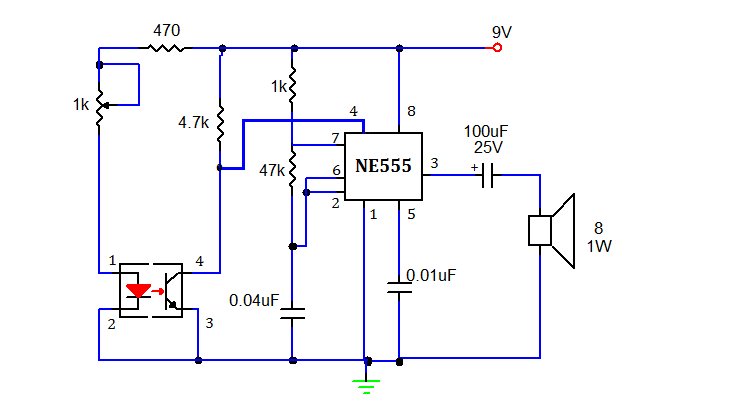
Ultrasonic Proximity Detector

This is an ultrasonic proximity detector circuit. This circuit consists of a micropower operational amplifier and a pair of matched piezo-ceramic transducers. It uses a 9V battery as the power source.
The ultrasonic proximity detector circuit operates by emitting ultrasonic waves through the paired piezo-ceramic transducers. The circuit is designed to measure the time it takes for the emitted waves to reflect off nearby objects and return to the transducers. The operational amplifier processes the signals received from the transducers, enabling the detection of proximity based on the time delay of the reflected waves.
Key components include the micropower operational amplifier, which ensures low power consumption, making the circuit suitable for battery-operated applications. The matched piezo-ceramic transducers are critical for generating and receiving the ultrasonic signals, ensuring that the emitted frequency is consistent and optimized for detecting nearby objects.
The circuit's design may also incorporate additional elements such as resistors and capacitors to filter the signal and improve sensitivity. The output can be connected to an indicator, such as an LED or a buzzer, to provide a visual or audible alert when an object is detected within a specified range. This makes the ultrasonic proximity detector ideal for applications in robotics, automotive systems, and security devices, where distance measurement and object detection are essential.
Overall, this circuit exemplifies a practical application of ultrasonic technology, leveraging simple components to achieve effective proximity sensing.This is ultrasonic proximity detector circuit. This circuit consist of micropower opamp and a pair of matched piezo-ceramic tranducers. It uses a 9V battery as.. 🔗 External reference
The ultrasonic proximity detector circuit operates by emitting ultrasonic waves through the paired piezo-ceramic transducers. The circuit is designed to measure the time it takes for the emitted waves to reflect off nearby objects and return to the transducers. The operational amplifier processes the signals received from the transducers, enabling the detection of proximity based on the time delay of the reflected waves.
Key components include the micropower operational amplifier, which ensures low power consumption, making the circuit suitable for battery-operated applications. The matched piezo-ceramic transducers are critical for generating and receiving the ultrasonic signals, ensuring that the emitted frequency is consistent and optimized for detecting nearby objects.
The circuit's design may also incorporate additional elements such as resistors and capacitors to filter the signal and improve sensitivity. The output can be connected to an indicator, such as an LED or a buzzer, to provide a visual or audible alert when an object is detected within a specified range. This makes the ultrasonic proximity detector ideal for applications in robotics, automotive systems, and security devices, where distance measurement and object detection are essential.
Overall, this circuit exemplifies a practical application of ultrasonic technology, leveraging simple components to achieve effective proximity sensing.This is ultrasonic proximity detector circuit. This circuit consist of micropower opamp and a pair of matched piezo-ceramic tranducers. It uses a 9V battery as.. 🔗 External reference





